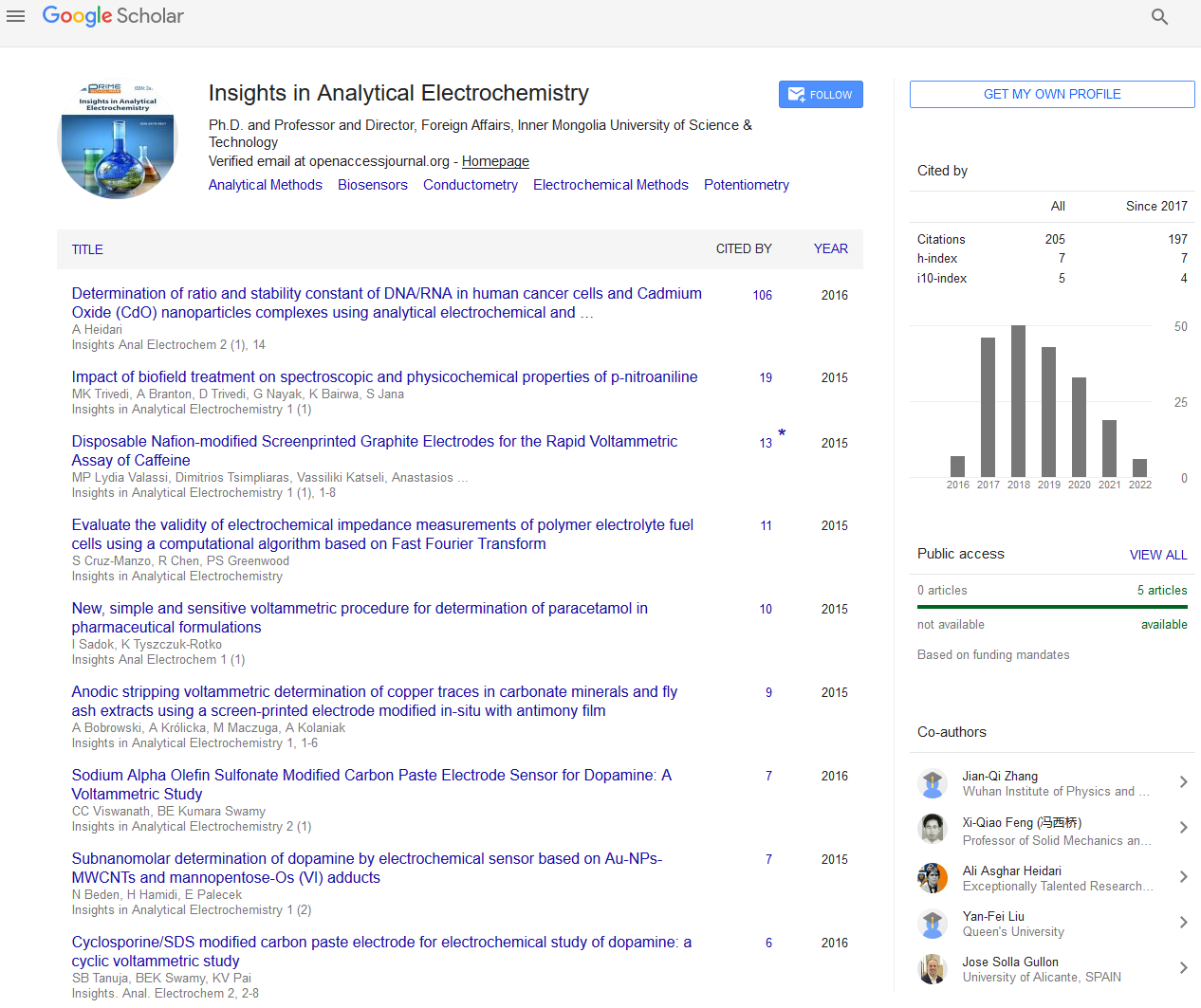Short Communication - (2024) Volume 10, Issue 2
Understanding Redox Reactions: Mechanisms, Applications, and Significance
Michael Thompson*
Department of Chemistry, Harvard University, USA
*Correspondence:
Michael Thompson,
Department of Chemistry, Harvard University,
USA,
Email:
Received: 29-May-2024, Manuscript No. IPAEI-24-20795;
Editor assigned: 31-May-2024, Pre QC No. IPAEI-24-20795 (PQ);
Reviewed: 14-Jun-2024, QC No. IPAEI-24-20795;
Revised: 19-Jun-2024, Manuscript No. IPAEI-24-20795 (R);
Published:
26-Jun-2024, DOI: 10.36648/2470-9867.24.10.19
Introduction
Redox reactions, short for reduction-oxidation reactions, are
fundamental processes in chemistry that involve the transfer
of electrons between chemical species. These reactions are
ubiquitous in both natural and industrial contexts, playing a
crucial role in biological systems, energy production, corrosion,
and various industrial processes. The essence of a redox reaction
is that one species undergoes oxidation (loses electrons) while
another species undergoes reduction (gains electrons). This
article explores the mechanisms of redox reactions, their
wide-ranging applications, and their significance in different
fields of science and technology. Redox reactions involve two
half-reactions: oxidation and reduction [1,2]. These can be
represented in terms of their half-equations, which separately
show the loss and gain of electrons. A typical redox reaction
can be exemplified by the reaction between zinc metal and
copper sulphate solution.
Description
Redox reactions are the backbone of electrochemical cells,
including batteries and fuel cells. For instance, in a zinccarbon
battery, zinc is oxidized, and manganese dioxide is
reduced, generating electrical energy. Cellular respiration
and photosynthesis are prime examples of redox reactions
in biological systems. During cellular respiration, glucose is
oxidized, and oxygen is reduced to produce energy, water, and
carbon dioxide. Corrosion is a redox process where metals
deteriorate due to oxidation. Iron rusting involves the oxidation
of iron to iron oxide in the presence of moisture and oxygen.
Redox reactions are used in numerous industrial processes
such as the extraction of metals from ores, wastewater
treatment, and the manufacturing of chemicals. For example,
in the production of chlorine, the electrolysis of sodium
chloride solution involves the oxidation of chloride ions to
chlorine gas. Redox reactions are employed in environmental
applications, including the remediation of contaminated soils
and water. For instance, the reduction of hexavalent chromium
to its less toxic trivalent form is a crucial redox reaction in
environmental clean-up. Redox reactions are vital for the
advancement of technology and the maintenance of ecological
balance. Redox reactions in fuel cells offer a clean and efficient
way to produce energy, reducing dependence on fossil fuels
and lowering greenhouse gas emissions. Redox reactions are
essential in medical diagnostics and treatments. For example,
glucose monitors used by diabetics rely on the redox reaction
of glucose with an enzyme to measure blood sugar levels.
Understanding redox mechanisms enables the development of
more efficient industrial processes, leading to better resource
management and cost savings. Help in reducing pollutants
and treating hazardous wastes, contributing to environmental
sustainability. Redox reactions can also involve complex organic
molecules and occur in multiple steps, as seen in biochemical
processes like cellular respiration and photosynthesis.
Additionally, these reactions can be catalysed by enzymes or
other catalysts to increase the reaction rate and specificity.
Understanding the intricate details of these mechanisms is
crucial for advancements in chemical research and technology
[3,4].
Conclusion
Redox reactions are a cornerstone of both natural processes
and technological advancements. Their ability to facilitate
electron transfer underpins many essential applications,
from energy production and industrial manufacturing to
biological functions and environmental protection. As scientific
research progresses, the understanding and manipulation of
redox reactions continue to evolve, opening new avenues for innovation and efficiency in various fields. The importance
of redox reactions cannot be overstated, as they remain a
fundamental aspect of chemistry that impacts numerous
aspects of modern life.
Acknowledgement
None.
Conflict Of Interest
The author’s declared that they have no conflict of interest.
References
- Ha LD, Park K, Chang BY, Hwang S (2019) Implementation of second-generation fourier transform electrochemical impedance spectroscopy with commercial potentiostat and application to time-resolved electrochemical impedance spectroscopy. Anal Chem 91:14208-14213.
[Crossref] [Google Scholar] [PubMed]
- Fasmin F, Srinivasan R (2017) Review-nonlinear electrochemical impedance spectroscopy. J Electrochem Soc 164:H443-H455.
[Crossref] [Google Scholar]
- Slouka C, Wurm D J, Brunauer G, Welzl-Wachter A, Spadiut O, et al. (2016) A novel application for low frequency electrochemical impedance spectroscopy as an online process monitoring tool for viable cell concentrations. Sensors 16:1900.
[Crossref] [Google Scholar] [PubMed]
- Leva-Bueno J, Peyman SA, Millner PA (2020) A review on impedimetric immunosensors for pathogen and biomarker detection. Med Microbiol Immunol 209:343-362.
[Crossref] [Google Scholar] [PubMed]
Citation: Thompson M (2024) Understanding Redox Reactions: Mechanisms, Applications, and Significance. Insights Anal Electrochem. 10:19.
Copyright: © 2024 Thompson M. This is an open-access article distributed under the terms of the Creative Commons Attribution License, which permits unrestricted use, distribution, and reproduction in any medium, provided the original author and source are credited.

